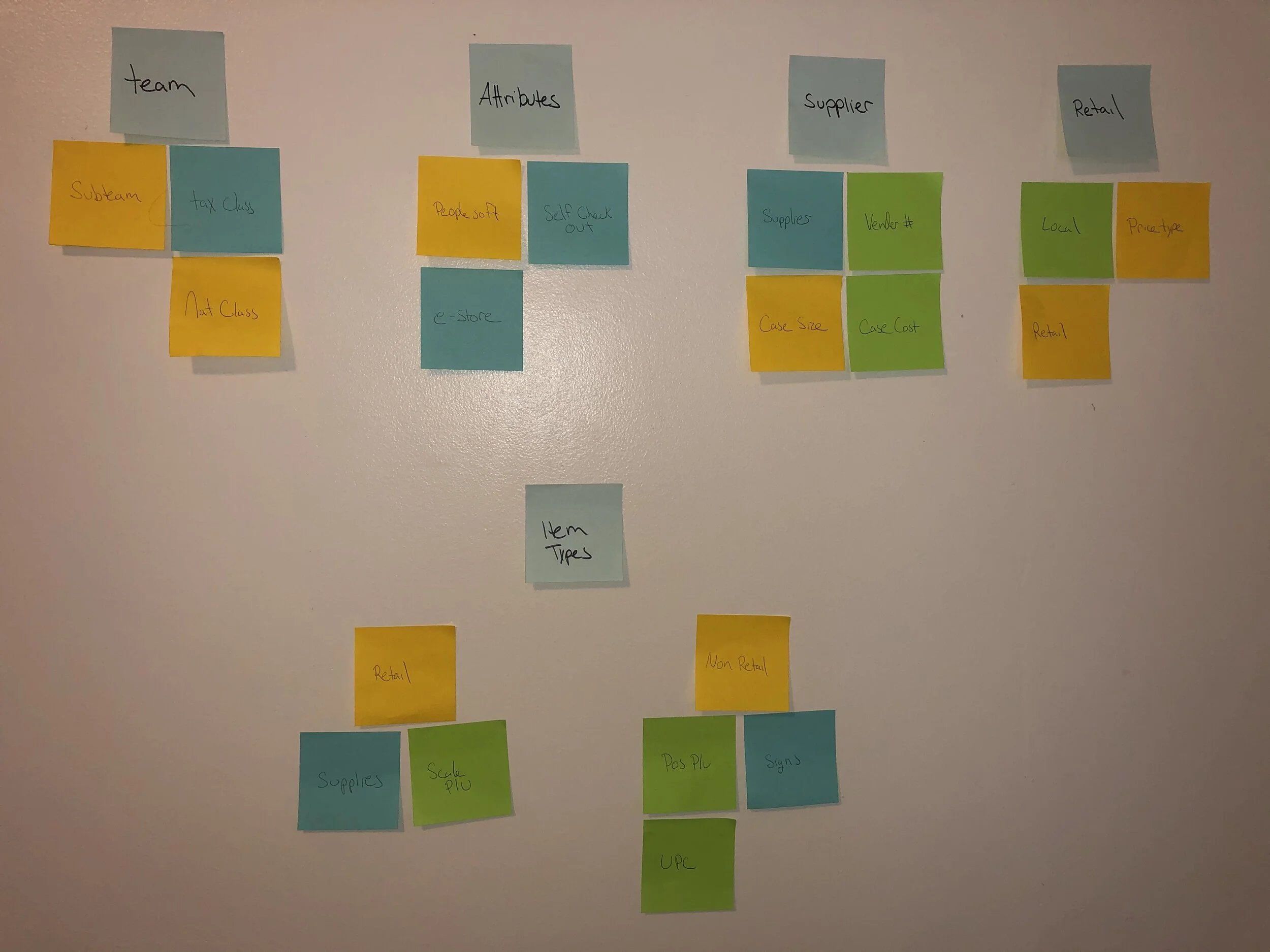New Item Submission
Goal
After a decision was made to decommission existing product maintenance systems, my team was tasked to develop a replacement process within our current application structure. We would essentially build the portal through which all new item information was shuttled to multiple internal databases. In other words, this New Item Submission process we created would be the entry point for all items being brought into Whole Foods Market. Our main goal for this new system was to streamline the procedure and improve the experience of our internal users with a simplified process.
Objectives:
Simplify the current multiple stage approach
Handle large volumes of data
Prioritize functionality over aesthetics
My role
Perform foundational research
Create information architecture
Design prototypes
Develop user stories
Conduct user testing sessions
Process
Foundational Research
In the initial stage of the project, my team and I started with a fact finding mission, researching the existing processes. I identified multiple points where delays occurred, which stemmed from the various handoffs between teams and databases that occurred after submitting a new item request. It caused an extreme slow down in the workflow.
In assessing the current process, I interviewed a group of users: Does the process serve your needs? What do you find most challenging about the current process? This provided me with key insight that our users were looking for an intuitive process that provided a single entry point and a quicker set-up time.
Prototyping
Each New Item Submission requires a large amount of information, which presented an initial layout challenge. Because of this we determined that our design should function similar to a spreadsheet. This provides the user easy ways to add a large amount of data very easily. Using card sorting exercises I was able to define groups of like-items that could be grouped by specific characteristics. This guided my design process and help created a simplified layout.
My initial wireframes were designed to show the overall functionality of the application. This gave us a simplified visual that allowed us to show it to potential users for feedback.
After the wireframes were workshopped, I used the feedback to make adjustments and work on the design. Because we were working within an established application, I was able to reuse existing components to make design decisions easily while also providing a more consistent user experience.
I went through multiple iterations to provide the simplest view while showing all the required information. In order to save horizontal space, the page tabs were moved from the side panel to be tabs above the main form. By continually assessing the design, I was able to gather valuable usability feedback and continue to refine the functionality.
Architecture
Another aspect of this project required a significant amount of work behind the scenes. The New Item Submission process requires connection amongst several different databases. The handoffs between these applications had to be defined and clearly laid out to make sure that all information was passed along in proper order. I also designed the program to automatically assign specific attributes such as bottle deposits and tax classes.
Design
I used the existing design style and colors used throughout the application in order to maintain consistency throughout the application. We have a redesign planned for a future release that will improve the overall aesthetic and support greater accessibility needs.
Conclusion
After running a pilot I found I was able to reduce submission and completion time by 65% when compared to the previous processing time. We’ve also improved customer satisfaction, as feedback from various departments (from grocery to spirits to produce) has all been overwhelmingly positive.
One key take-away from this project was deciding when to deliver a Minimum Viable Product. Because several complexities were scoped into the application from the beginning and because development of those features delayed our initial release, we realized that it slowed the initial adoption of the new process. This reinforced the idea that a project rolled out in stages can, at times, be beneficial.



